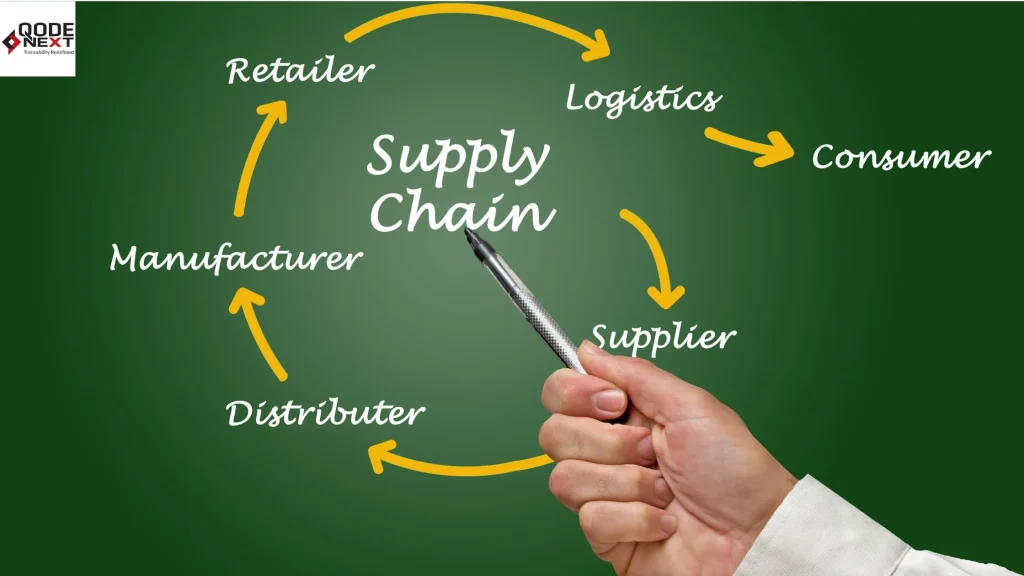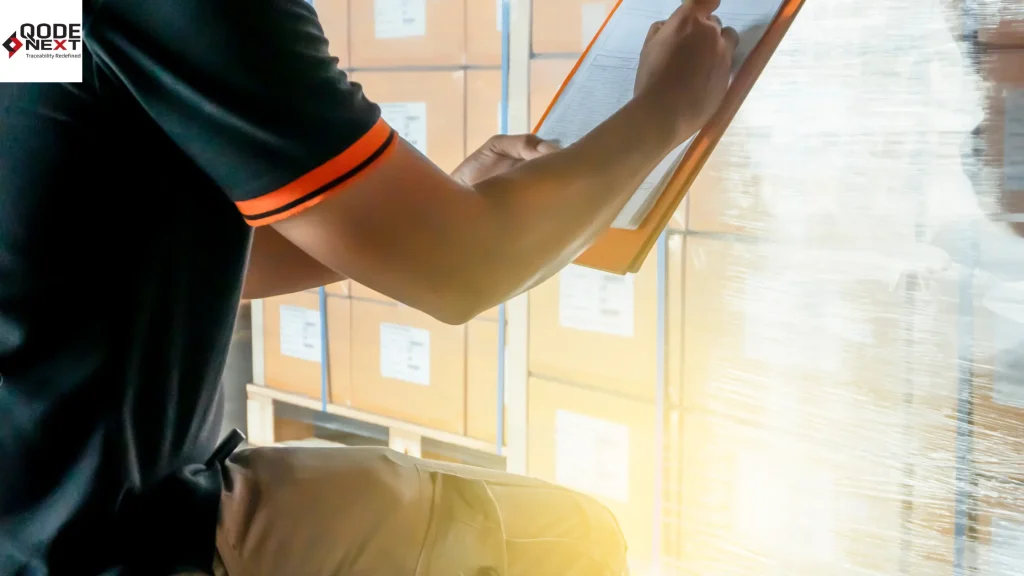The world of supply chain management is evolving at an unprecedented pace, driven by technological advancements, shifting consumer expectations, and global economic uncertainties.
As businesses brace for 2025, understanding emerging trends becomes crucial for staying ahead of the competition. This guide explores key supply chain trends that will shape the future of supply chain operations, helping businesses streamline logistics, reduce costs, and enhance efficiency.

Top Trends Influencing the Future of the Supply Chain
Automation, IoT and blockchain are set to become mainstream in 2025. Here are the major trends impacting the future of the supply chain in India:
1. AI and Machine Learning in Supply Chain Optimization
Artificial intelligence (AI) and machine learning (ML) have revolutionized supply chain operations. From predictive analytics to intelligent automation, AI-driven solutions are helping businesses enhance decision-making and improve demand forecasting.
Key Trends in AI & ML for 2025:
- Predictive Demand Forecasting: AI algorithms analyze historical data to predict demand fluctuations, reducing overstock and stockouts.
- Real-Time Route Optimization: AI-driven logistics platforms adjust delivery routes dynamically, ensuring faster and cost-effective shipping.
- AI-Powered Procurement: Automated supplier selection and risk assessment streamline procurement processes.
By integrating AI, businesses can proactively respond to challenges and enhance the future of supply chain management.
2. Blockchain for Enhanced Transparency and Security
Blockchain technology is set to play a more prominent role in ensuring supply chain traceability, security, and efficiency. As regulatory requirements for product authenticity increase, blockchain provides an immutable ledger for tracking goods from origin to delivery.
How Blockchain Will Shape the Future of Supply Chain:
- End-to-End Traceability: Every transaction is securely recorded, ensuring transparency in the movement of goods.
- Counterfeit Prevention: Blockchain verifies product authenticity, especially in pharmaceuticals, luxury goods, and food industries.
- Smart Contracts: Automated contract execution reduces paperwork and enhances supplier-buyer relationships.
With blockchain adoption on the rise, companies can build more resilient and transparent supply chains.
3. The Rise of Hyper automation in Supply Chains
Hyperautomation, the combination of robotic process automation (RPA), AI, and IoT, is redefining operational efficiency in supply chains. It minimizes human intervention, enhances productivity, and reduces operational costs.
New Trends in Supply Chain Management for 2025:
- Warehouse Automation: Autonomous robots, AI-driven picking systems, and automated storage solutions enhance order fulfilment.
- Intelligent Order Processing: AI automates invoice generation, inventory updates, and payment processing.
- Cognitive Supply Chains: AI systems analyze market trends and adjust supply chain strategies accordingly.
As hyper-automation takes centre stage, businesses will experience a more agile and responsive future of supply chain management.
4. Sustainable and Circular Supply Chains
Sustainability is no longer optional—it is a business necessity. Companies are moving towards greener supply chains by integrating circular economy principles, reducing carbon footprints, and implementing eco-friendly logistics solutions.
Sustainability Trends Transforming the Future of Supply Chain:
- Eco-Friendly Packaging: Companies are replacing plastic with biodegradable or recyclable materials.
- Carbon-Neutral Logistics: The adoption of electric and hydrogen-powered vehicles is gaining momentum.
- Reverse Logistics: Businesses are focusing on product reuse, refurbishment, and recycling.
Sustainability-driven supply chains not only enhance brand reputation but also comply with stringent environmental regulations.
5. Digital Twins for Real-Time Supply Chain Simulation
Digital twins—virtual replicas of physical supply chain assets—are helping businesses optimize operations and mitigate risks in real-time. By creating a digital copy of supply chain components, companies can simulate disruptions and strategise better.
How Digital Twins Are Reshaping Supply Chains:
- Proactive Risk Management: Businesses can anticipate disruptions and develop contingency plans.
- Optimized Logistics Networks: Simulations help improve transportation routes, warehouse layouts, and inventory management.
- Enhanced Supplier Collaboration: Real-time data sharing enhances coordination with suppliers and partners.
By integrating digital twin technology, businesses can enhance resilience in the future of supply chain operations.
6. The Evolution of Last-Mile Delivery
Last-mile delivery is the most critical and cost-intensive part of logistics. With rising consumer expectations for faster deliveries, companies are investing in innovative solutions to enhance last-mile efficiency.
Last-Mile Delivery Trends for 2025:
- Autonomous Delivery Drones: Drones are being deployed for rapid, contactless deliveries in urban areas.
- Crowdsourced Delivery Models: Businesses are leveraging local couriers for flexible delivery options.
- Smart Lockers & Pickup Points: Customers can collect packages from designated secure lockers, reducing delivery failures.
The transformation of last-mile logistics will define the future of supply chain operations for eCommerce and retail businesses.
7. Resilient and Agile Supply Chains
The disruptions caused by the pandemic, geopolitical tensions, and natural disasters have emphasized the need for supply chain resilience. Businesses are diversifying their sourcing strategies and adopting agile models to withstand uncertainties.
Key Resilience Strategies for 2025:
- Nearshoring & Multi-Sourcing: Companies are sourcing materials from multiple suppliers to reduce dependency on single sources.
- Cloud-Based Supply Chain Management: Cloud solutions enhance visibility, collaboration, and real-time decision-making.
- Scenario Planning & Risk Assessments: AI-driven simulations help businesses prepare for potential disruptions.
A resilient supply chain ensures business continuity and operational stability in uncertain times.
8. The Role of IoT in Real-Time Visibility
The Internet of Things (IoT) is transforming supply chains by providing real-time tracking and monitoring of goods. IoT sensors and connected devices enhance inventory accuracy and improve logistics efficiency.
How IoT Is Enhancing the Future of Supply Chain:
- Smart Warehousing: IoT-enabled RFID tags improve inventory tracking and management.
- Fleet Tracking & Monitoring: GPS sensors provide real-time location updates and optimize fleet performance.
- Cold Chain Management: IoT monitors temperature-sensitive shipments in pharmaceuticals and food industries.
With IoT integration, supply chains will become more data-driven and efficient in 2025. However, future challenges in supply chain management will also exist, making it crucial to implement these technologies systemically.
FAQs – The Future of Supply Chain in 2025
How will AI impact the future of logistics and supply chain management?
AI will enhance predictive analytics, automate processes, and improve decision-making, leading to more efficient and agile supply chains.
Why is blockchain important for supply chains?
Blockchain ensures end-to-end traceability, prevents counterfeiting, and enhances transaction security.
What is hyper-automation, and how will it affect supply chain management?
Hyperautomation combines AI, RPA, and IoT to automate supply chain processes, reducing manual effort and increasing efficiency.
What is the future of sustainability in supply chain management?
Sustainable supply chains will reduce carbon footprints, promote eco-friendly logistics, and enhance brand reputation.
How will digital twins help businesses in supply chain management?
Digital twins allow companies to simulate supply chain scenarios, optimize logistics, and improve decision-making.
What are the biggest last-mile delivery innovations for 2025?
Autonomous drones, crowdsourced deliveries, and smart lockers are some of the major last-mile innovations.
How can businesses build a resilient supply chain?
Diversifying suppliers, using cloud-based solutions, and implementing risk assessments can strengthen supply chain resilience.
How does IoT improve manufacturing efficiency?
IoT enables real-time tracking, smart warehousing, and optimized fleet management, ensuring smoother logistics operations.
Conclusion
Digital transformation, automation, and sustainability will define the future of the supply chain in 2025. Businesses that embrace AI, blockchain, hyper-automation, and resilient strategies will stay ahead of the competition. By proactively adapting to these trends, companies can build agile, transparent, and efficient supply chains that meet the demands of a dynamic global market.
Do you want to invest in innovation and future-proof your supply chain efficiency? Reach out to Qodenext today.







